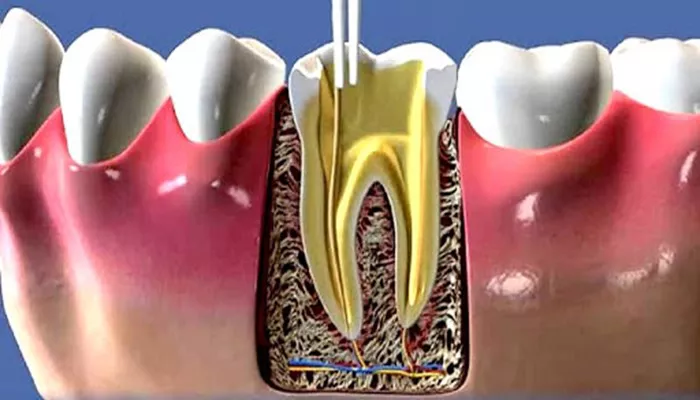Tooth decay, also known as dental caries, is a common dental issue that affects millions of people worldwide. It occurs when bacteria in the mouth break down sugars and produce acids, which erode the tooth enamel and create cavities. If left untreated, tooth decay can progress and reach the tooth’s nerve, leading to severe pain and potentially serious complications. In this article, we will explore what happens when tooth decay reaches the nerve and discuss the symptoms, causes, and treatment options available.
Understanding Tooth Structure
To understand how tooth decay affects the nerve, it’s essential to know the basic structure of a tooth. A tooth consists of three main layers:
Enamel: The outermost layer, which is hard and protects the tooth from decay.
Dentin: The layer beneath the enamel, which is softer and more susceptible to decay.
Pulp: The innermost layer, containing blood vessels and nerves. The pulp is responsible for the tooth’s sensitivity and vitality.
When tooth decay penetrates through the enamel and dentin, it can reach the pulp, causing damage to the nerves and blood vessels inside.
Causes of Tooth Decay Reaching the Nerve
Tooth decay reaching the nerve is often a result of poor oral hygiene or neglecting dental care. Here are some common causes:
Poor Oral Hygiene: Inadequate brushing and flossing allow plaque and tartar to accumulate, leading to tooth decay.
Diet High in Sugars: Consuming foods and drinks high in sugars provides bacteria with the fuel they need to produce acids that erode tooth enamel.
Lack of Regular Dental Check-ups: Failing to visit the dentist regularly can lead to undetected tooth decay, allowing it to progress to the pulp.
Symptoms of Tooth Decay Reaching the Nerve
When tooth decay reaches the nerve, it can cause several symptoms, including:
Severe Toothache: Pain can be sharp, throbbing, or shooting and may worsen at night.
Sensitivity to Temperature: Teeth become extremely sensitive to hot or cold foods and drinks.
Painful Chewing: Discomfort or pain while biting down or chewing food.
Swelling and Redness: Inflammation around the affected tooth, leading to swelling and redness of the gums.
What Happens When Tooth Decay Reaches the Nerve
When tooth decay reaches the nerve, it can lead to several complications:
Nerve Damage: The bacteria from the decay can infect the pulp, causing inflammation and damage to the nerves.
Abscess Formation: In severe cases, an abscess may form at the root of the tooth, which is a painful pus-filled swelling.
Loss of Tooth Vitality: The tooth may become non-vital or “dead” due to the lack of blood flow and nerve function.
Treatment Options for Tooth Decay Reaching the Nerve
Treatment for tooth decay that has reached the nerve depends on the extent of the damage. Here are some common treatment options:
Dental Filling or Crown
If the decay is caught early and hasn’t extensively damaged the nerve, a dental filling or crown may be sufficient. This involves removing the decayed portion and restoring the tooth with a filling or crown.
Root Canal Therapy
In cases where the nerve is infected, a root canal is often necessary. This procedure involves removing the infected nerve tissue, cleaning and disinfecting the root canal, and sealing it to prevent further infection5. After a root canal, a dental crown is usually placed to protect the tooth.
Tooth Extraction
If the damage is too extensive and the tooth cannot be saved, extraction may be the only option. This is typically followed by a dental bridge or implant to replace the missing tooth.
Complications of Untreated Tooth Decay
Leaving tooth decay untreated can lead to serious complications:
Infection Spread: The infection can spread to other parts of the mouth, jaw, or even the bloodstream, leading to systemic infections.
Abscesses: Untreated infections can form abscesses, which are painful and require immediate dental attention.
Tooth Loss: Eventually, the tooth may fall out on its own if not treated, which can affect chewing and overall oral health.
Preventing Tooth Decay from Reaching the Nerve
Prevention is key to avoiding tooth decay and its complications:
Maintain Good Oral Hygiene: Brush teeth at least twice a day with fluoride toothpaste and floss daily to remove plaque and debris.
Limit Sugary Foods: Reduce consumption of sugary foods and drinks to minimize acid production by bacteria.
Regular Dental Check-ups: Visit the dentist regularly for check-ups and cleanings to catch any issues early.
Conclusion
Tooth decay reaching the nerve is a serious dental issue that requires prompt attention. Understanding the causes, symptoms, and treatment options can help individuals take proactive steps to prevent such complications. By maintaining good oral hygiene and visiting the dentist regularly, you can significantly reduce the risk of tooth decay progressing to the nerve and ensure a healthy, pain-free smile.
In summary, while tooth decay reaching the nerve can be painful and serious, it is often preventable with proper care and attention. If you experience any symptoms of nerve damage or tooth decay, it’s crucial to seek professional dental help as soon as possible to prevent further complications and ensure the best possible outcome for your oral health.

